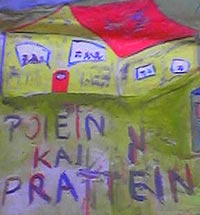Melina Mercouri International Prize for Cultural Landscapes (UNESCO-Greece)
|
Melina Mercouri International Prize |
|
|
||||||
The purpose of the Melina Mercouri International Prize is to reward outstanding examples of action to safeguard and enhance the world’s major cultural landscapes. It is named after Melina Mercouri, a precursor in the field of integrated conservation and sustainable development, a memorable actress and former Minister of Culture of Greece. It meets a new need, clearly identified by the World Heritage Committee which, at its sixteenth session, held in Santa Fe in December 1992, recognized that "the concept of cultural landscapes which completes the conventional ones of ‘monuments’ or ‘sites’, brings a more universal approach to cultural heritage. The protection of cultural landscapes is therefore one of the main priorities of the present time". Cultural landscapes fall into three main categories 1. The most easily identifiable is the clearly defined landscape designed and created intentionally by human beings. This embraces garden and parkland landscapes constructed for aesthetic reasons, which are often (but not always) associated with religious buildings and ensembles. 2. The second category is the organically evolved landscape, a landscape that results from an initial social, economic, administrative, and/or religious imperative and has developed its present form by association with and in response to its natural environment. Such landscapes reflect that process of evolution in their form and component features. They fall into two subcategories:
3. The final category is the associative cultural landscape. The inclusion of such landscapes on the World Heritage List is justifiable by virtue of the powerful religious, artistic or cultural associations of the natural element rather than material cultural evidence, which may be insignificant or even absent.
|
||||||
http://portal.unesco.org/culture/en/ev.php-URL_ID=7191&URL_DO=DO_TOPIC&URL_SECTION=201.html
« Cultural Landscapes | UNESCO - in-between a global intention and local appeal »
